Essential Hair Care Routine Tips for Healthier Locks
A healthy hair care routine is essential for maintaining vibrant and luscious locks. Many people struggle with dry, damaged, or lackluster hair, unaware that the key to healthier tresses lies in adopting the right hair care practices. A proper hair care routine can transform the health and appearance of one’s hair, leading to stronger strands, improved growth, and a more manageable mane.
This article delves into the best hair care routine tips to help achieve healthier locks. It covers understanding different hair types, effective cleansing techniques, and the art of conditioning. Additionally, it explores ways to nourish hair from within, protect it from damage, and develop styling habits that promote hair health. The guide also touches on the importance of regular trims and maintenance to keep hair looking its best.
Understanding Your Hair Type
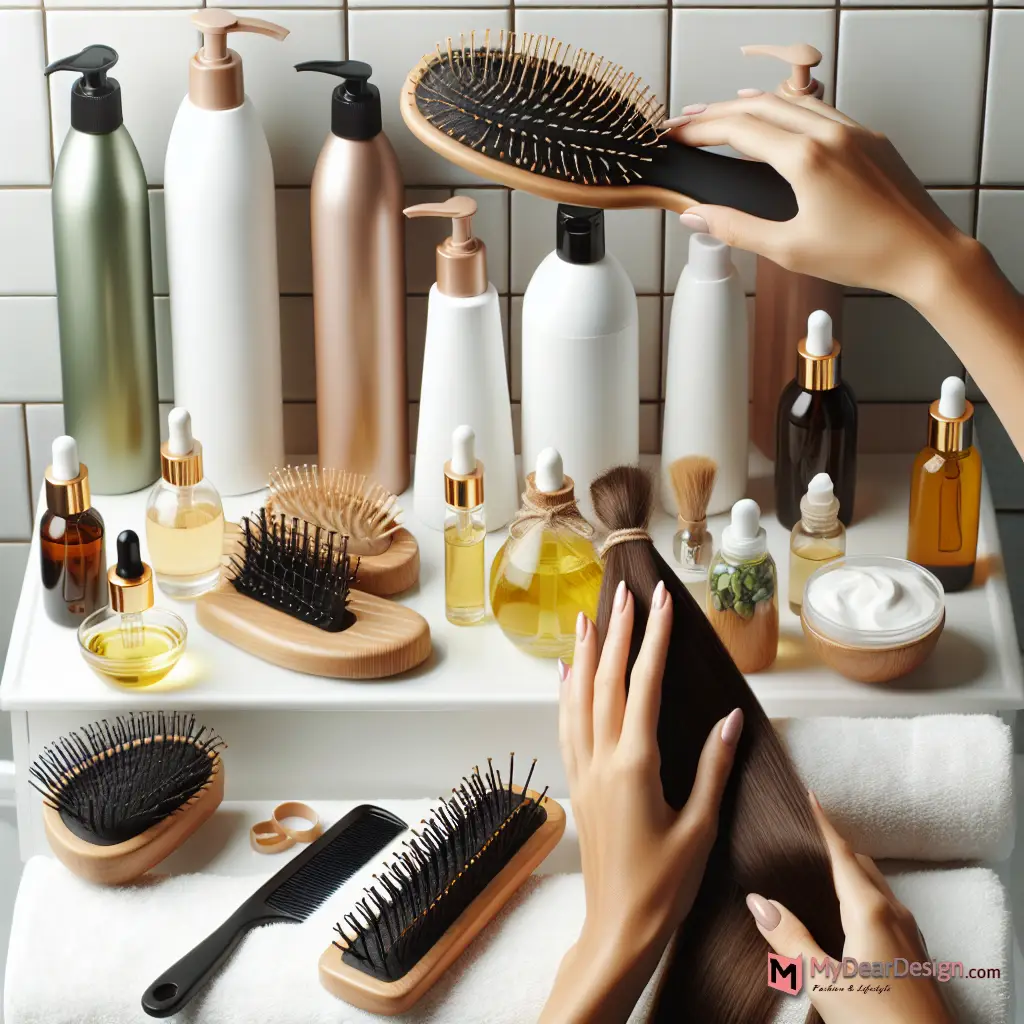
To establish an effective hair care routine, it is crucial to understand one’s hair type. This knowledge helps in selecting appropriate products and techniques to maintain healthy locks. Hair type is determined by several factors, including texture, porosity, and scalp condition.
Identifying Hair Texture
Hair texture refers to the thickness or width of individual hair strands . It is generally classified into three categories: fine, medium, and coarse. To identify hair texture, one can perform a simple test by rolling a single strand of hair between their fingers . If the strand is barely noticeable, it is considered fine. A medium texture will be slightly more noticeable, while coarse hair will be easily felt .
Hair texture plays a significant role in determining how hair responds to different products and styling techniques. For instance, fine hair may require lighter products to avoid weighing it down, while coarse hair might benefit from richer, more moisturizing formulas.
Recognizing Hair Porosity
Hair porosity is the ability of hair to absorb and retain moisture . It is primarily determined by genetics but can be affected by external factors such as heat styling and chemical treatments . Understanding hair porosity is essential for choosing the right hair care products and treatments.
There are three main categories of hair porosity:
- Low Porosity: Hair with tightly bound cuticles that resist moisture absorption but retain it well once absorbed .
- Medium Porosity: Hair with a balanced ability to absorb and retain moisture .
- High Porosity: Hair with gaps in the cuticle layer, allowing easy moisture absorption but quick loss .
To determine hair porosity, one can perform simple tests such as the float test, strand test, or spray bottle test . For example, the float test involves placing a clean strand of hair in a glass of water. If it floats, it likely has low porosity; if it sinks, it may have high porosity .
Assessing Scalp Condition
The condition of the scalp significantly impacts hair health and growth. A healthy scalp provides an optimal environment for hair follicles, while an unhealthy scalp can lead to various issues, including hair loss .
Scalp conditions can be categorized into three main types:
- Dry Scalp: Characterized by irritation, flaking, and sometimes itching or burning sensations .
- Oily Scalp: Results from overproduction of sebum, leading to greasy hair, buildup, and potential dandruff .
- Normal Scalp: Balanced oil production with no significant issues .
To determine scalp type, observe how quickly hair becomes oily after washing and any recurring scalp issues. Those with an oily scalp may need to wash their hair every 1-2 days, while those with a normal scalp can go about 3 days between washes .
Understanding these aspects of hair type allows for a more tailored and effective hair care routine, promoting healthier, more manageable locks.
Cleansing Techniques for Healthy Hair
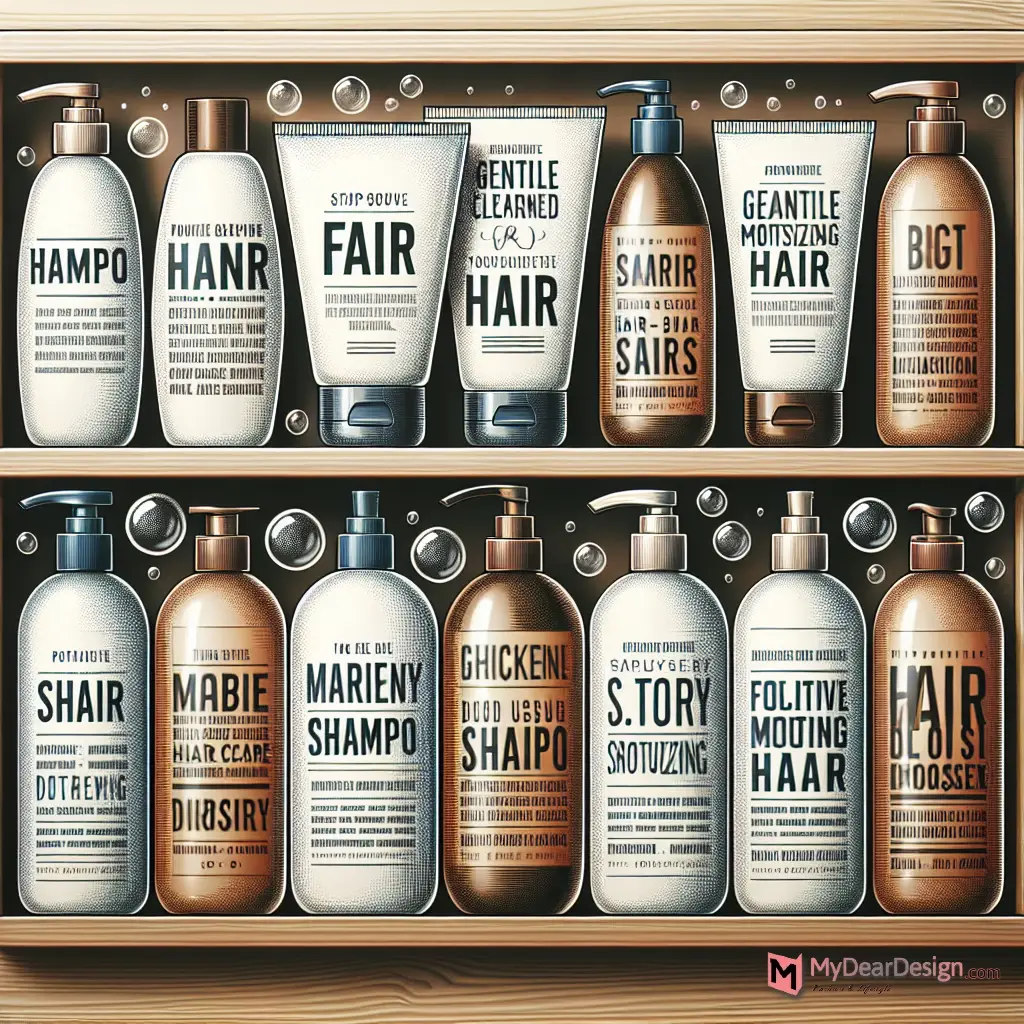
Choosing the Right Shampoo
Selecting the appropriate shampoo is crucial for maintaining healthy hair. The choice depends on various factors, including hair type, texture, and specific hair care needs. For those with fine hair, a gentle clarifying shampoo is recommended to avoid weighing down the strands. Individuals with thick or coarse hair should opt for moisturizing shampoos to provide adequate hydration .
Color-treated hair requires special attention, and a color-safe shampoo that won’t strip the dye is essential. For bleached hair, a clarifying shampoo can help prevent unwanted yellow tones . It’s important to note that shampoos containing sulfates and silicones should be avoided, as they can cause skin irritation and buildup .
Proper Shampooing Methods
To achieve the best results, it’s crucial to follow proper shampooing techniques. Here are some key steps to consider:
- Thoroughly wet the hair with lukewarm water to open the cuticles and prepare for cleansing .
- Mix a small amount of shampoo with water in the palm of your hand before applying .
- Focus on shampooing the scalp rather than the ends of the hair .
- Gently massage the scalp with fingertips, avoiding the use of nails, for about 3 minutes to stimulate blood flow .
- Rinse the hair for 1 to 2 minutes to ensure all soap is removed .
For those with dry hair, rinsing with cold water can help strengthen the hair and maintain its natural protective barrier .
Frequency of Washing
The frequency of hair washing varies depending on individual factors such as hair type, lifestyle, and personal preferences. People with oily hair or those who use hair care products daily should consider washing their hair every 1-2 days . On the other hand, individuals with dry hair can wash less frequently .
For those with textured or coily hair, washing once every 1-2 weeks is recommended to prevent dryness and breakage . It’s important to note that contrary to popular belief, daily washing is not necessary for most people, and the frequency can be adjusted based on individual needs .
Factors that may influence washing frequency include:
- Presence of sweat after workouts or extended periods of wearing headwear
- Accumulation of pollen or dirt in the hair
- Amount of oil production in the scalp
- Use of styling products
By understanding these cleansing techniques and tailoring them to individual hair types and needs, individuals can develop a proper hair care routine that promotes healthier, more manageable locks.
The Art of Conditioning
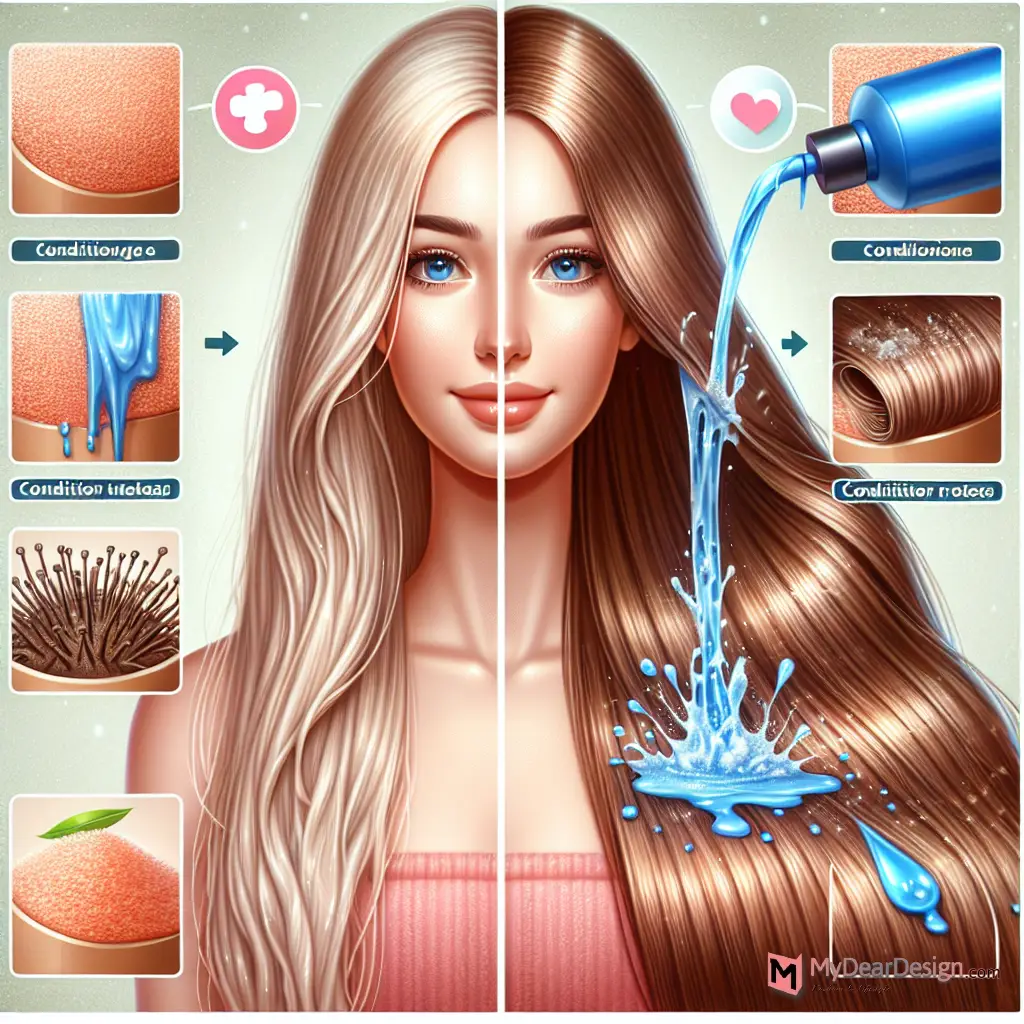
Conditioning is a crucial step in any hair care routine, as it helps to nourish, protect, and improve the overall health of hair. While shampoo cleanses the scalp and hair of dirt and impurities, conditioner restores moisture and essential nutrients . The right conditioning techniques can lead to softer, shinier, and more manageable locks.
Types of Conditioners
There are several types of conditioners available, each designed to address specific hair needs:
- Regular Conditioner: This is the most common type, used after shampooing to add moisture and improve hair texture .
- Deep Conditioner: These products contain higher concentrations of emollient and humectant ingredients than daily conditioners. They are left in the hair for 20 to 30 minutes and can continue working for days after use .
- Leave-in Conditioner: This type is applied to damp hair and not rinsed out. It helps to detangle strands, smooth frizz, and keep flyaways at bay. It’s particularly beneficial for curly or coily hair types .
- Protein Conditioner: Contains keratin to strengthen hair and prevent breakage. It’s ideal for fine, straight hair or dry, wavy, or curly hair types .
- Moisturizing Conditioner: Contains more oils to soften and smooth the hair. It’s best suited for moderately dry, curly, or thick hair types .
How to Apply Conditioner
Proper application of conditioner is key to maximizing its benefits:
- Apply conditioner only to the ends of your hair, as this is typically the most damaged or oldest part .
- Avoid applying conditioner near the scalp and roots, as this can clog follicles and increase oil production .
- Allow the conditioner to set for a few minutes to improve hair health. Try applying conditioner first, then wash the rest of your body before rinsing it out .
- Rinse with cool water for a few minutes. When your hair feels smooth and no longer slippery, you’re done .
- For those with curly or kinky hair, use a detangling brush or wet brush designed to remove knots while the hair is wet .
Deep Conditioning Treatments
Deep conditioning treatments can provide extra nourishment and repair for hair:
- Frequency: Unless you have particularly oily hair, using a deep conditioner once per week is generally recommended .
- Application: If you have dry hair or tight curls, apply the deep conditioner close to the roots. For oilier hair types, focus on mid-shaft to ends .
- Duration: Follow the product instructions, but on average, leave the deep conditioner on for about 20 to 30 minutes .
- Ingredients to Look For: Effective deep conditioners often contain emollients like honey, avocado oil, shea butter, and coconut oil .
- DIY Option: A homemade deep conditioner can be made with ingredients rich in omega-3 fatty acids, such as avocado, egg, and olive oil .
By understanding the different types of conditioners and how to use them effectively, individuals can develop a proper hair care routine that promotes healthier, more manageable locks. Remember to choose products that suit your specific hair type and needs for the best results.
Nourishing Your Hair from Within
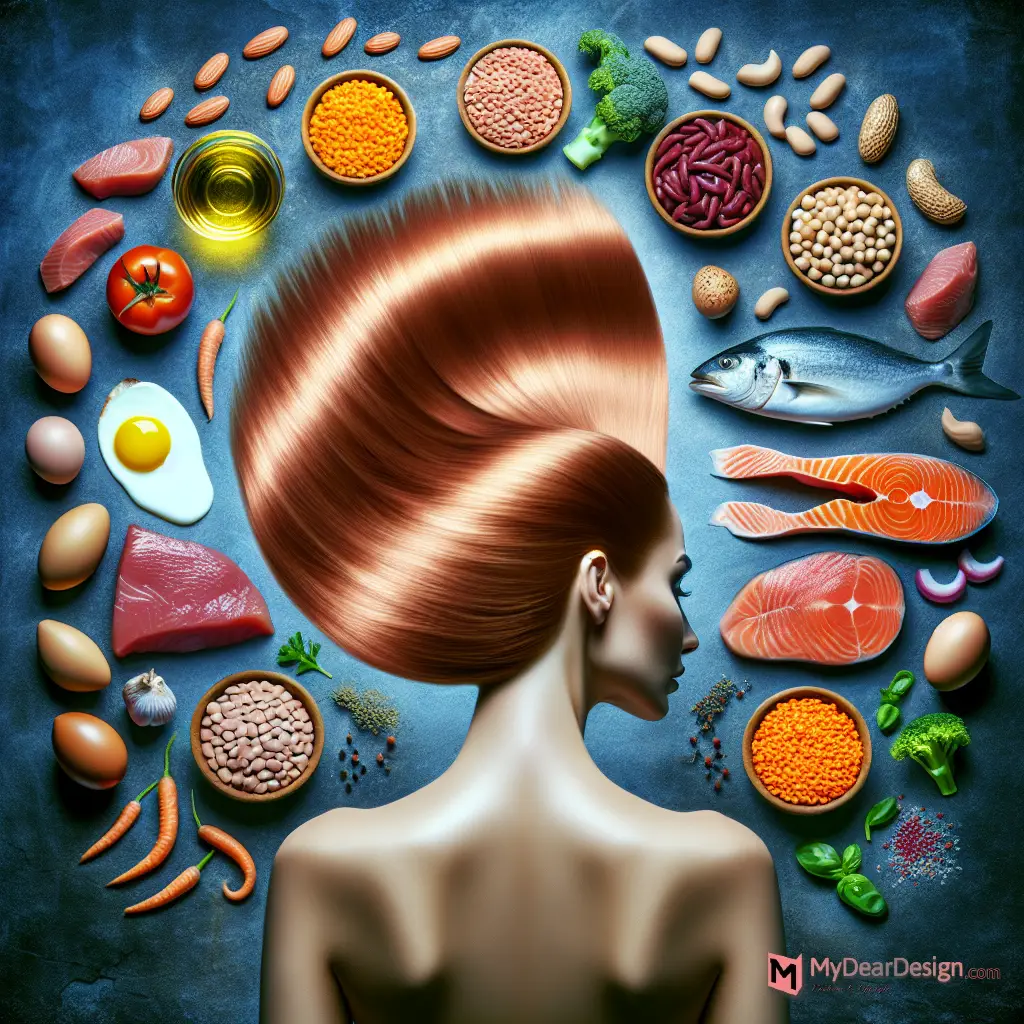
Essential nutrients for hair health
A balanced diet rich in specific nutrients is crucial for maintaining healthy hair. Protein, the primary component of hair strands, forms keratin for strength and structure . Adequate protein intake repairs and grows hair, reducing brittleness and breakage. Excellent sources of protein include lean meats like chicken and turkey, fish such as salmon and tuna, eggs, and plant-based options like lentils and chickpeas .
Several vitamins and minerals play vital roles in hair health:
- B-complex vitamins: Biotin (Vitamin B7) supports hair growth and strengthens strands by producing keratin. Pantothenic Acid (Vitamin B5) enhances hair flexibility and scalp health, while Pyridoxine (Vitamin B6) prevents hair thinning and graying .
- Vitamin D3: Known as the ‘sunshine vitamin,’ it promotes hair growth and prevents hair loss by activating hair follicles and improving hair density .
- Vitamin E: This antioxidant improves scalp circulation, ensuring better blood flow and nutrient supply to hair follicles .
- Vitamin C: It supports collagen production, an essential protein for hair structure and strength .
- Vitamin A: Maintains healthy sebum production, the natural oil that moisturizes the scalp and hair .
- Zinc: Aids in hair repair and growth by facilitating tissue repair and cell division .
- Iron: Essential for healthy hair follicles as it transports oxygen and nutrients to the hair roots .
Hydration and its importance
Proper hydration is crucial for maintaining healthy hair. Water accounts for nearly 25% of a strand of hair weight, making it essential for hair growth and overall health . Adequate hydration helps energize and support hair growth from root to tip, creating an ideal environment for healthier hair .
Drinking enough water benefits the scalp and hair in several ways:
- Prevents scalp issues: Proper hydration reduces the risk of developing scalp problems such as dryness, itchiness, and dandruff .
- Strengthens hair: Water hydrates hair strands, making them less prone to breakage and split ends .
- Stimulates growth: Drinking water triggers energy transmission from the scalp to hair follicles, promoting hair growth .
- Improves nutrient absorption: Keeping the body hydrated enhances blood circulation and nutrient absorption, both essential for growing healthy hair .
- Flushes toxins: Adequate water intake helps remove toxins that can negatively impact hair follicles’ ability to grow strong, healthy strands .
To maintain proper hydration, aim for pale yellow, almost transparent urine color . Along with drinking plenty of water, consuming fruits and vegetables with high natural water content can provide additional fluids and vital minerals .
Supplements for hair growth
While a balanced diet should provide most essential nutrients, supplements can help address specific deficiencies that may impact hair health. Some key supplements for hair growth include:
- Biotin: Low levels of biotin can damage hair follicles, causing hair fall. Clinically proven supplements containing biotin from natural sources like Sesbania Agati Plant can strengthen hair follicles and nourish hair roots .
- Iron and Zinc: Deficiencies in these minerals can lead to hair loss. Supplements providing iron from curry leaf extracts and zinc from guava leaf extracts can support hair health .
- DHT blockers: Excess DHT (dihydrotestosterone) hormone can cause hair follicles to shrink and eventually close. Zinc supplements may help block excess DHT and strengthen hair follicles .
- Stress-reducing supplements: Stress can disrupt hormonal balance and nutrient absorption, impacting hair growth. Brahmi supplements may help reduce cortisol levels (stress-causing hormones) that affect stem cells necessary for hair growth .
- Vitamin E: Supplements containing vitamin E extracted from sunflower can help hydrate and nourish the scalp, preventing an unhealthy and undernourished scalp condition .
By focusing on proper nutrition, hydration, and targeted supplementation, individuals can nourish their hair from within, promoting healthier, stronger, and more vibrant locks.
Protecting Your Hair from Damage
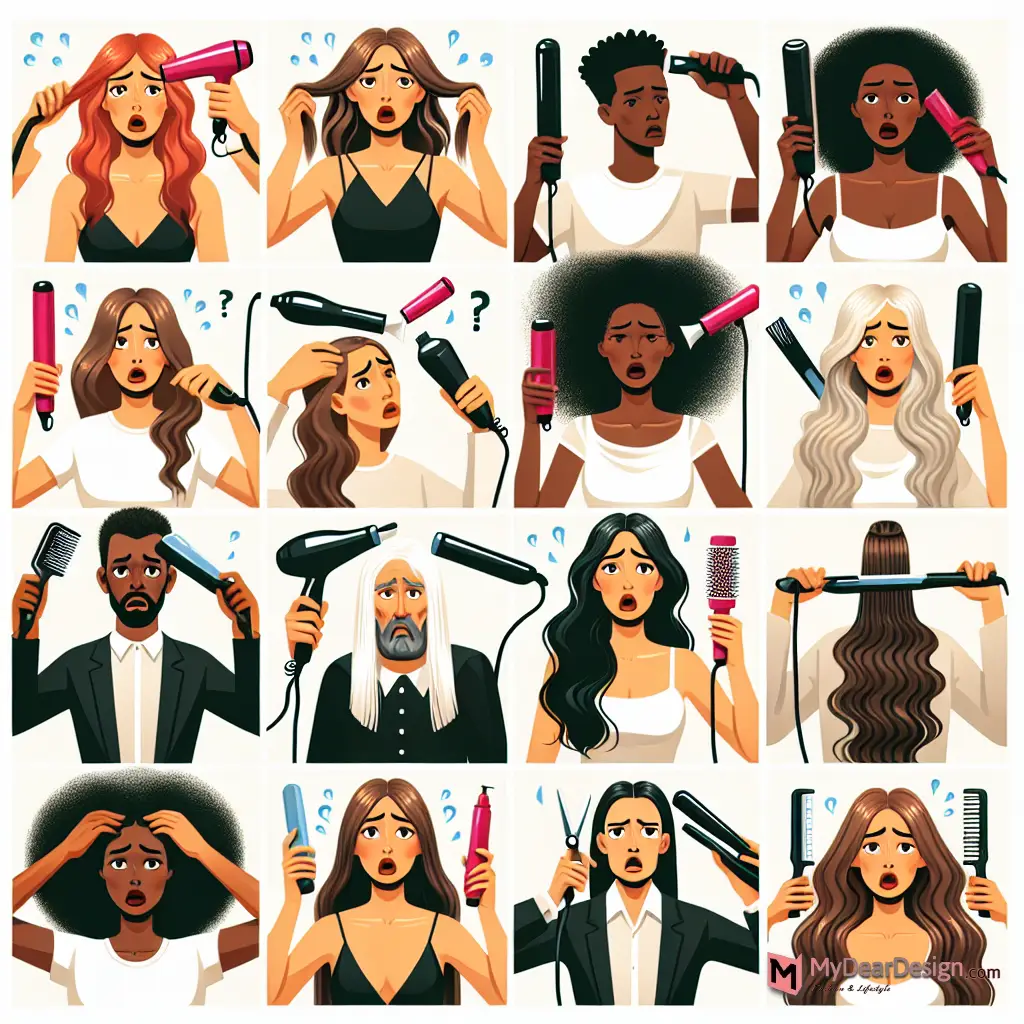
Heat Styling Precautions
Heat styling tools can cause significant damage to hair if not used properly. To minimize the risk of heat damage, it’s crucial to follow some essential precautions. First and foremost, always apply a heat protectant before using any hot tools. This creates a protective barrier between the hair and the heat source, reducing the risk of damage .
When using heat styling tools, it’s important to set them to the appropriate temperature. For normal hair, the recommended temperature range is between 200-300°F. Those with fine hair should keep the temperature at or below 200°F . It’s also crucial to avoid subjecting the same section of hair to heat for too long. Quick, fluid movements help ensure that the hair isn’t exposed to excessive heat .
Investing in high-quality styling tools with temperature control can make a significant difference in protecting hair from heat damage. These tools often come with features that help safeguard hair from excessive heat exposure .
Sun and Environmental Protection
Just as the skin needs protection from the sun, hair also requires shielding from harmful UV rays. Prolonged exposure to the sun can lead to various forms of damage, including discoloration, dryness, brittleness, split ends, thinning, and frizziness . UVA and UVB rays can damage the hair’s cuticle, the outer protective layer of the hair strand .
To protect hair from sun damage, consider using hair sunscreen products. These products work by forming a protective barrier on the hair’s surface, helping to shield it from UV radiation. Look for products containing UV filters such as avobenzone, octinoxate, and zinc oxide .
Other effective ways to protect hair from sun damage include:
- Wearing a wide-brimmed hat or using an umbrella
- Limiting sun exposure during peak hours
- Using a swim cap when swimming in chlorinated pools
- Rinsing hair with clear water after swimming to remove chemicals
Nighttime Hair Care
A proper nighttime hair care routine can significantly contribute to maintaining healthy hair. One crucial rule is to never go to sleep with wet hair. Wet hair is more vulnerable to damage as the hydrogen bonds are more flexible, making it prone to stretching and breaking .
Before bed, gently detangle and smooth your hair to prevent knots and breakage that can occur from tossing and turning during sleep . Consider applying an overnight treatment to provide extra hydration. For those with thicker or drier hair, a honey-infused hair oil can work wonders, helping to lock in moisture and reduce frizz .
Braiding hair before sleep can help keep it contained and organized, reducing the chances of tangles and knots forming. It also protects hair from friction against the pillowcase, which can cause damage .
Switching to a satin or silk pillowcase can also make a significant difference. These smooth fabrics are gentler on hair, preventing tangles and breakage while sleeping . Additionally, using a hair bonnet or silk cap can provide extra protection for your tresses during the night .
By incorporating these protective measures into your hair care routine, you can significantly reduce damage from heat styling, environmental factors, and nighttime friction, promoting healthier and more manageable hair.
Styling Habits for Healthier Hair
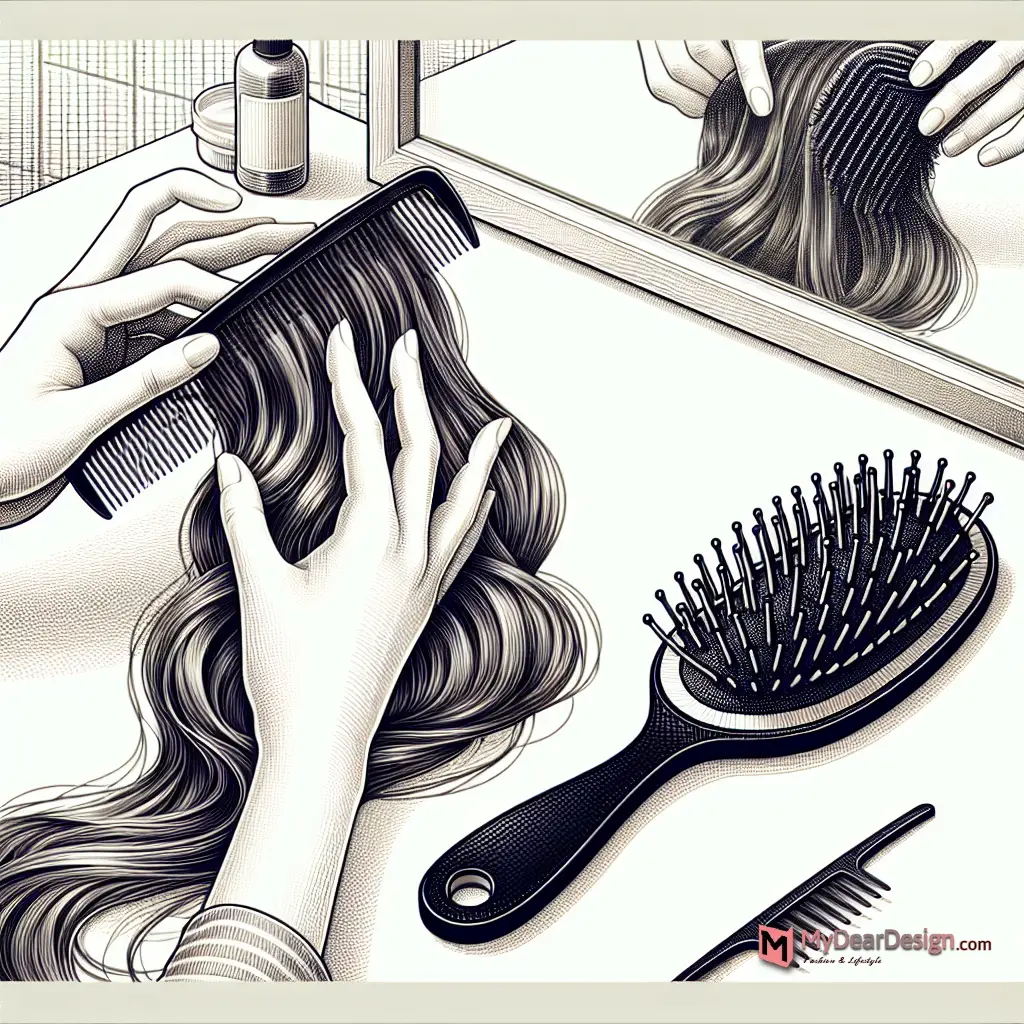
Gentle Detangling Techniques
Proper detangling is crucial for maintaining healthy hair and preventing breakage. One of the most significant benefits of regularly detangling hair is the elimination of breakage and damage . To effectively detangle hair, it’s important to start with the right tools, such as a wide-toothed comb or a hair detangler brush .
The golden rule for detangling hair is to start from the bottom and work your way up . This approach prevents further knotting and minimizes breakage, especially for those with long or textured hair. Begin by gently untangling the ends of your hair, then gradually move upward toward the roots .
For those with curly or textured hair, it’s especially important to detangle regularly. The tight curls and coils can easily become intertwined, making it essential to detangle to prevent breakage . Using a wide-toothed comb or your fingers can help preserve natural curls and prevent unnecessary frizz .
Low-Manipulation Hairstyles
Low-manipulation hairstyles are designed to minimize the amount of handling and styling your hair undergoes, which can help reduce damage and breakage. These styles require less frequent styling and manipulation, allowing your hair to rest and grow .
Some examples of low-manipulation hairstyles include:
- Low buns: An absolute classic hairstyle for healthy hair, with the bun sitting nicely on the nape of your neck, reducing tension on hair follicles .
- Braids: Perfect for creating a put-together style while protecting your hair from damage .
- Half-up, half-down styles: Ensure the ponytail is placed towards the back of the head rather than on top to minimize tension .
- Low ponytails: A quick and easy option that can be jazzed up for various occasions .
These styles not only keep your hair out of the way but also help to reduce the risk of breakage caused by constant manipulation .
Avoiding Tight Hairstyles
While sleek ponytails, cornrows, or tightly pulled updos can look great, wearing them frequently can lead to hair loss. This type of hair loss is called traction alopecia . Any hairstyle that pulls the hair back creates tension on the hair follicles, especially along the hairline .
To prevent damage from tight hairstyles:
- Avoid frequently wearing hairstyles that pull on your hair .
- Loosen braids, especially around your hairline .
- Wear braided styles for no longer than two to three months .
- Opt for thicker braids and dreadlocks to reduce tension .
- If using weaves or extensions, wear them for short periods and remove them immediately if they cause pain or irritate your scalp .
By adopting these styling habits, you can maintain healthier hair while still enjoying a variety of hairstyles. Remember, the key is to be gentle with your hair and minimize tension and manipulation to promote growth and prevent damage.
Trimming and Maintenance
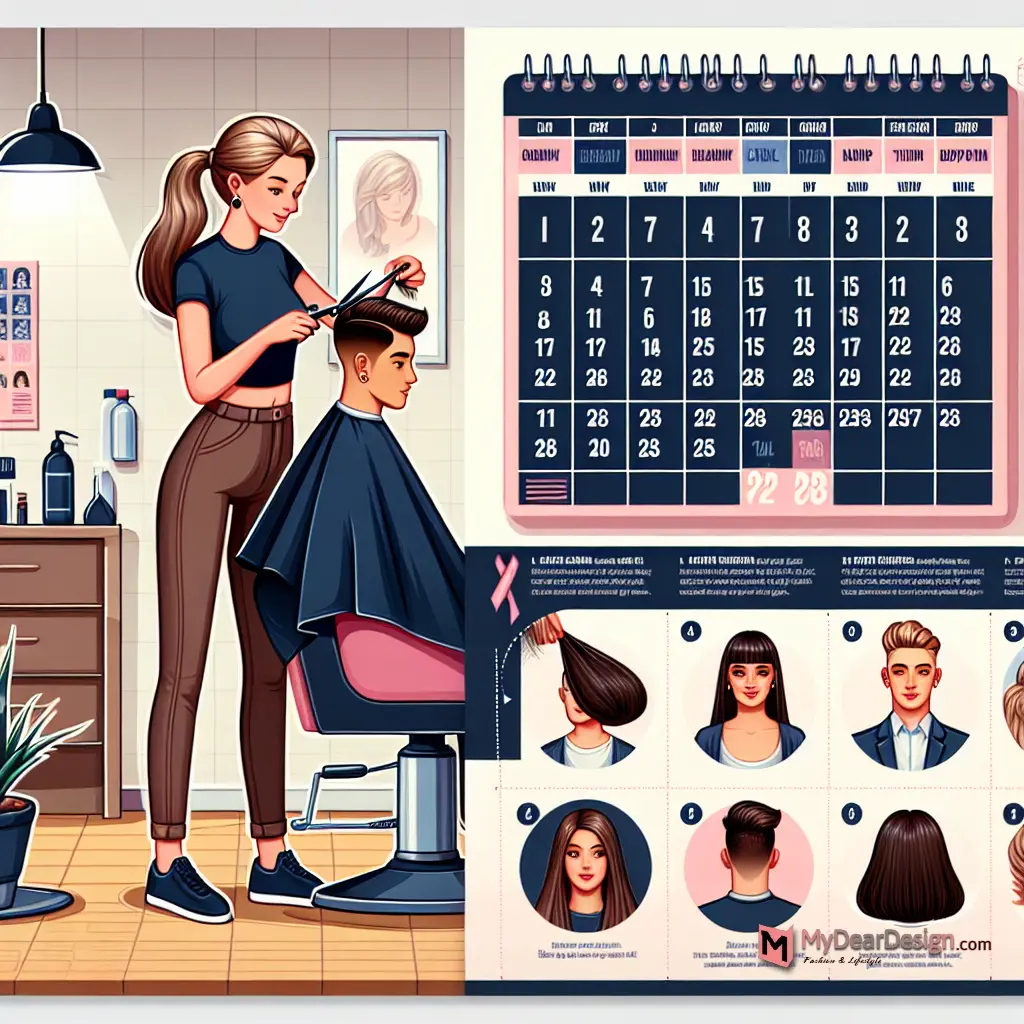
Regular Trim Schedule
Maintaining a regular trim schedule is crucial for healthy hair growth and overall hair health. While the frequency of trims can vary depending on individual hair types and conditions, a general recommendation is to trim hair every 8-12 weeks . This timeframe allows for the removal of split ends and damaged hair without sacrificing too much length.
For those with short haircuts, more frequent trims may be necessary. Short styles tend to lose their distinctiveness quickly, so regular trims every 6 to 8 weeks can help maintain a sharp look . On the other hand, individuals with long hair can often extend the time between trims to 3 to 4 months .
It’s important to note that different hair types and styles may require varying trim schedules:
- Bangs: May need trimming every 2 to 4 weeks
- Layered hair: Typically requires trimming every 6 to 8 weeks
- Thick hair: Can often go a few months without trimming
- Fine hair: May need more frequent trims, as often as every 6 weeks
- Curly hair: Can wait longer between trims, sometimes up to 12 weeks
Dealing with Split Ends
Split ends are a common hair concern that can lead to further damage if left untreated. Unfortunately, split ends cannot be repaired once they occur . The only effective solution is to trim them off to prevent further splitting up the hair shaft .
To manage split ends effectively:
- Regular trims: Schedule regular trims to remove split ends before they worsen
- Moisturizing treatments: Apply coconut oil, almond oil, or other moisturizers to the ends of the hair to make damage less noticeable
- Protective hairstyles: Choose styles that hide the ends of the hair, such as low or high buns
- Gentle hair care: Be gentle when brushing or styling wet hair to prevent further damage
Professional vs. At-Home Trims
While professional trims are generally recommended for maintaining hair health, some individuals opt for at-home trims. Both options have their advantages and considerations:
Professional Trims:
- Expertise: Hairstylists have the skills to create precise cuts and maintain specific styles
- Consultation: Professionals can provide advice on hair health and suitable styles
- Quality tools: Salons use professional-grade tools for better results
At-Home Trims:
- Convenience: No need for scheduling appointments or travel
- Cost-effective: Saves money on regular salon visits
- Control: Allows for more frequent maintenance of specific areas, such as bangs
For those who choose to trim at home, it’s essential to use professional-quality scissors and follow proper techniques. Some individuals practice “dusting,” which involves lightly snipping the ends to remove splits or damage without losing significant length .
Ultimately, the choice between professional and at-home trims depends on individual preferences, hair type, and styling needs. Regular maintenance, whether done professionally or at home, is key to maintaining healthy, manageable hair.
Conclusion
A well-structured hair care routine has a significant impact on the health and appearance of your locks. By understanding your hair type, using proper cleansing and conditioning techniques, and nourishing your hair from within, you can achieve healthier and more manageable tresses. Protecting your hair from damage, adopting gentle styling habits, and maintaining regular trims are also key elements to promote hair growth and overall hair health.
To wrap up, the journey to healthier hair involves a combination of proper care, protection, and maintenance. By incorporating these essential tips into your daily routine, you can transform your locks and enjoy vibrant, luscious hair. For more inspiration and ideas on creating the best hair care routine for your needs, check out mydeardesign.com.

Thank you for your sharing. I am worried that I lack creative ideas. It is your article that makes me full of hope. Thank you. But, I have a question, can you help me?